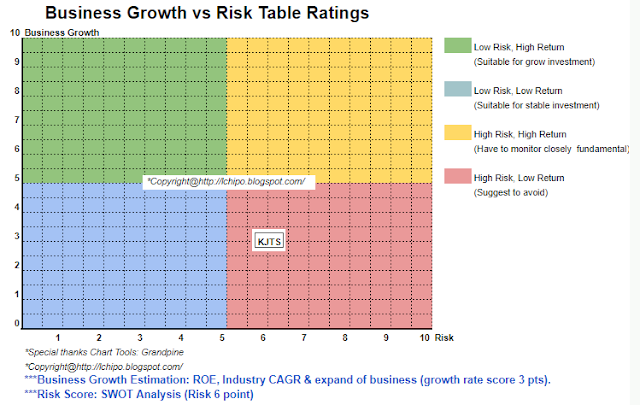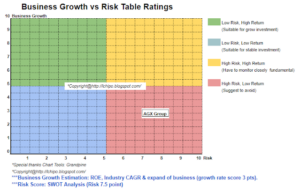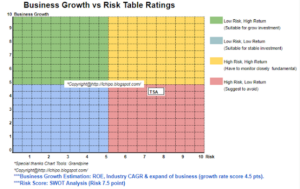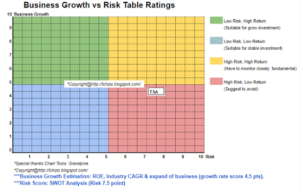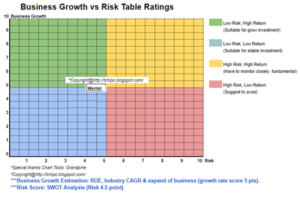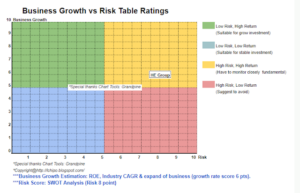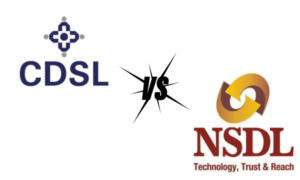A couple of weeks ago, the first six
AFS licenses for crowdfunding were issued, paving the way for Australian
companies to raise money from retail investors without listing on the ASX.
While I usually restrict this blog to reviewing initial offerings of publicly
listed companies, I thought it might be interesting to review one of the first
crowdfunding offers in Australia to mark the occasion. There’s something to be
said for reviewing a company that doesn’t have a public market for its shares,
as you are less likely to end up looking like an idiot.
AFS licenses for crowdfunding were issued, paving the way for Australian
companies to raise money from retail investors without listing on the ASX.
While I usually restrict this blog to reviewing initial offerings of publicly
listed companies, I thought it might be interesting to review one of the first
crowdfunding offers in Australia to mark the occasion. There’s something to be
said for reviewing a company that doesn’t have a public market for its shares,
as you are less likely to end up looking like an idiot.
While a few of the crowdfunding platforms are
still in the process of setting up their first offers, Equitise seem to have
got the early jump on the competition. Their crowdfunding campaign for Xinja, a
start-up digital or “Neo” bank, is already live and at
time of writing $1.3 million into their 3 million dollar raise.
still in the process of setting up their first offers, Equitise seem to have
got the early jump on the competition. Their crowdfunding campaign for Xinja, a
start-up digital or “Neo” bank, is already live and at
time of writing $1.3 million into their 3 million dollar raise.
Xinja has ambitious goals. With the recent weakening of laws
regarding setting up banks in Australia, they intend to set up a fully
functioning Australian bank, complete with deposit accounts and mortgages.
regarding setting up banks in Australia, they intend to set up a fully
functioning Australian bank, complete with deposit accounts and mortgages.
Just in case you forget this is a crowdfunding offer as opposed to your usual
boring IPO, they have put together a pitch video, replete with flashy animations and bubbly tech muzak in addition to the
standard offer document and financials. Once you look past the executives in
torn jeans and distressed-paint walls, you quickly conclude that the pitch
seems entirely devoid of anything original. Xinja’s main claim is that they
will be the first “100% digital bank,” offering fully online services with no
branches, but ME bank has been offering deposit accounts since 2003 in
Australia and has never opened a branch. Another big focus of their pitch is
that they will develop tools that nudge customers to make better financial
decisions, which seems pretty similar to an advertising campaign NAB has
been running for years. While the idea of a new digital bank in Australia is in itself is somewhat
interesting, it is a shame that this is as far as they have got in terms of
originality. Watching Xinja’s pitch video I’m reminded of that old Yes Prime
Minister joke, about how boring speeches should be delivered in modern looking
rooms with abstract paintings on the walls to disguise the absence of anything new in the actual speech. These days the modern equivalent I
guess is a converted warehouse office space and vague references to blockchain.
boring IPO, they have put together a pitch video, replete with flashy animations and bubbly tech muzak in addition to the
standard offer document and financials. Once you look past the executives in
torn jeans and distressed-paint walls, you quickly conclude that the pitch
seems entirely devoid of anything original. Xinja’s main claim is that they
will be the first “100% digital bank,” offering fully online services with no
branches, but ME bank has been offering deposit accounts since 2003 in
Australia and has never opened a branch. Another big focus of their pitch is
that they will develop tools that nudge customers to make better financial
decisions, which seems pretty similar to an advertising campaign NAB has
been running for years. While the idea of a new digital bank in Australia is in itself is somewhat
interesting, it is a shame that this is as far as they have got in terms of
originality. Watching Xinja’s pitch video I’m reminded of that old Yes Prime
Minister joke, about how boring speeches should be delivered in modern looking
rooms with abstract paintings on the walls to disguise the absence of anything new in the actual speech. These days the modern equivalent I
guess is a converted warehouse office space and vague references to blockchain.
What makes this paucity of orginality a
particular concern is that the challenge faced by Xinja is enormous. There are
good reasons why Australia has been dominated by the same big four banks as
long as anyone can remember, and it’s not because no one has ever thought of
making banking work on your phone. The pitch seems to promote this idea
that the big banks are old tired institutions,
with needlessly slow and cumbersome processes, just waiting to be pushed aside
by some new start-up. As someone who works in
the finance industry I know this is far from reality. Banks are obsessed with
innovation and change, and are constantly sinking huge amounts of money into
technology to stay ahead of the curve. The simple reality is that banking is
one of the most heavily regulated industries in Australia. More often than not,
what you find frustrating or slow about a bank’s processes
is down to legislative restrictions rather than the banks ineptitude or
unwillingness to change.
particular concern is that the challenge faced by Xinja is enormous. There are
good reasons why Australia has been dominated by the same big four banks as
long as anyone can remember, and it’s not because no one has ever thought of
making banking work on your phone. The pitch seems to promote this idea
that the big banks are old tired institutions,
with needlessly slow and cumbersome processes, just waiting to be pushed aside
by some new start-up. As someone who works in
the finance industry I know this is far from reality. Banks are obsessed with
innovation and change, and are constantly sinking huge amounts of money into
technology to stay ahead of the curve. The simple reality is that banking is
one of the most heavily regulated industries in Australia. More often than not,
what you find frustrating or slow about a bank’s processes
is down to legislative restrictions rather than the banks ineptitude or
unwillingness to change.
A lot is made in Xinja’s pitch video of
the involvement of the founder of Monzo in Xinja. Monzo is another digital/Neo
bank that was set up a few years ago in England. In the pitch Monzo is held up
as an example of the success of Neo Banking, but this seems like a ridiculously
premature thing to say. While Monzo has been through multiple capital raises at
increasingly higher valuations, the reality is Monzo’s revenue for 2017 was a
paltry $120,000 vs a loss of 6.8 million. It’s true that Monzo has some interesting ideas and managed to pick up an
impressive half a million customers thanks to their zero fee pre-paid cards,
but it is still far too early to hold them up as some sort of success. If I
started handing out free cup cakes at Flinders Street Station I’d probably run
out of cup cakes pretty quickly, but it’s hardly proof of a valid business.
the involvement of the founder of Monzo in Xinja. Monzo is another digital/Neo
bank that was set up a few years ago in England. In the pitch Monzo is held up
as an example of the success of Neo Banking, but this seems like a ridiculously
premature thing to say. While Monzo has been through multiple capital raises at
increasingly higher valuations, the reality is Monzo’s revenue for 2017 was a
paltry $120,000 vs a loss of 6.8 million. It’s true that Monzo has some interesting ideas and managed to pick up an
impressive half a million customers thanks to their zero fee pre-paid cards,
but it is still far too early to hold them up as some sort of success. If I
started handing out free cup cakes at Flinders Street Station I’d probably run
out of cup cakes pretty quickly, but it’s hardly proof of a valid business.
The example of Monzo also gives us a
good example of just how much capital is needed to start a bank. According to
Crunchbase, since June 2015 Monzo has raised a total of 109 million, and given
how far they are off profitability more funding rounds are probably on the cards. At
each raise the business valuation has increased, but it does demonstrate just
how long the road ahead is for Xinja.
good example of just how much capital is needed to start a bank. According to
Crunchbase, since June 2015 Monzo has raised a total of 109 million, and given
how far they are off profitability more funding rounds are probably on the cards. At
each raise the business valuation has increased, but it does demonstrate just
how long the road ahead is for Xinja.
Valuation
While it might be considered a bit boring
to talk about something as mundane as valuations and financials in the
crowdfunding world, it is probably worth noting that Xinja is raising its $3
million dollar campaign at a $43.1 million dollar valuation, higher than the
last 5 ASX IPOs I have reviewed on my blog.
to talk about something as mundane as valuations and financials in the
crowdfunding world, it is probably worth noting that Xinja is raising its $3
million dollar campaign at a $43.1 million dollar valuation, higher than the
last 5 ASX IPOs I have reviewed on my blog.
To be blunt, the $43.1 million market
capitalisation is completely ridiculous. Reading the “achievements to date”
section of the prospectus it is hard to believe someone was able to write this
with a straight face. While bullet points like “we have assembled a committed
and exceptional team” and “we have completed 80% of our app” might be
acceptable when putting together a slide deck at a hackathon, for a company
valuing itself at over $40 million dollars it is downright obscene.
capitalisation is completely ridiculous. Reading the “achievements to date”
section of the prospectus it is hard to believe someone was able to write this
with a straight face. While bullet points like “we have assembled a committed
and exceptional team” and “we have completed 80% of our app” might be
acceptable when putting together a slide deck at a hackathon, for a company
valuing itself at over $40 million dollars it is downright obscene.
Not only does Xinja have no revenue from
customers to date, they don’t even have trial products with customers or a
license for any type of banking activities in Australia. They have only raised
$7.8 million dollars before this crowdfunding campaign, which means that somehow
investors are meant to believe that the other $32.3 million of their valuation has been created by coming up with a company name and hiring a few people.
customers to date, they don’t even have trial products with customers or a
license for any type of banking activities in Australia. They have only raised
$7.8 million dollars before this crowdfunding campaign, which means that somehow
investors are meant to believe that the other $32.3 million of their valuation has been created by coming up with a company name and hiring a few people.
Even Monzo, which seems to have ridden
the hype train of ridiculous valuations pretty well, has been more restrained
in their valuations. In October 2016 when Monzo valued itself at $50 million
pounds, they had already been granted a restricted banking license and had a
prepaid cards with a fully developed app out to 50,000 people. Earlier on,
Monzo raised 6 million at only a $30 million valuation in March 2016, but at
that time had a working trial pre-paid card out to 1,500 people. In contrast,
Xinja has not only not yet released the beta version of their prepaid card,
they still don’t even have a banking license.
the hype train of ridiculous valuations pretty well, has been more restrained
in their valuations. In October 2016 when Monzo valued itself at $50 million
pounds, they had already been granted a restricted banking license and had a
prepaid cards with a fully developed app out to 50,000 people. Earlier on,
Monzo raised 6 million at only a $30 million valuation in March 2016, but at
that time had a working trial pre-paid card out to 1,500 people. In contrast,
Xinja has not only not yet released the beta version of their prepaid card,
they still don’t even have a banking license.
To provide just one more example of how
ridiculous the Xinja valuation is, it is worthwhile to look at the ratio of
book to market equity. Banking has always been a capital-intensive business,
and post-GFC regulations have only made it more so. This means that profits
always require significant amounts of capital. The CBA, for all its market
advantages from to being the largest bank in Australia has a book to equity
ratio of $0.43. This means for every dollar of CBA shares you purchase, you are
getting an entitlement to the earnings of $0.43 cents of equity on the CBA
balance sheet. For the Xinja crowdfunding campaign, a bank with no license,
revenue or market share, that ratio is only $0.22 cents.
ridiculous the Xinja valuation is, it is worthwhile to look at the ratio of
book to market equity. Banking has always been a capital-intensive business,
and post-GFC regulations have only made it more so. This means that profits
always require significant amounts of capital. The CBA, for all its market
advantages from to being the largest bank in Australia has a book to equity
ratio of $0.43. This means for every dollar of CBA shares you purchase, you are
getting an entitlement to the earnings of $0.43 cents of equity on the CBA
balance sheet. For the Xinja crowdfunding campaign, a bank with no license,
revenue or market share, that ratio is only $0.22 cents.
On the Xinja Equitise crowdfunding
campaign, the offer is described as a bank job. What they don’t tell you though
is you’re the one getting robbed.
campaign, the offer is described as a bank job. What they don’t tell you though
is you’re the one getting robbed.
- SEO Powered Content & PR Distribution. Get Amplified Today.
- PlatoData.Network Vertical Generative Ai. Empower Yourself. Access Here.
- PlatoAiStream. Web3 Intelligence. Knowledge Amplified. Access Here.
- PlatoESG. Carbon, CleanTech, Energy, Environment, Solar, Waste Management. Access Here.
- PlatoHealth. Biotech and Clinical Trials Intelligence. Access Here.
- Source: http://theiporeview.blogspot.com/2018/02/xinja.html
- :has
- :is
- :not
- $3
- $UP
- 000
- 1
- 17
- 2015
- 2016
- 2017
- 22
- 43
- 50
- 500
- 8
- a
- Able
- About
- ABSTRACT
- acceptable
- According
- Accounts
- activities
- actual
- addition
- advantages
- ago
- ahead
- All
- already
- also
- always
- ambitious
- amounts
- an
- and
- animations
- Another
- any
- anyone
- anything
- app
- ARE
- AS
- aside
- assembled
- ASX
- At
- Australia
- Australian
- Balance
- Balance Sheet
- Bank
- Banking
- Banks
- BE
- because
- been
- before
- being
- believe
- Better
- Big
- Bit
- blockchain
- Blog
- book
- Boring
- both
- Branch
- branches
- business
- but
- by
- Campaign
- CAN
- capital
- Capitalisation
- card
- Cards
- case
- challenge
- change
- claim
- clear
- color
- COM
- coming
- committed
- Companies
- company
- competition
- complete
- Completed
- completely
- Concern
- conclude
- considered
- constantly
- contrast
- converted
- Couple
- created
- Crowdfunding
- Crowdfunding Campaign
- crowdfunding platforms
- CrunchBase
- cumbersome
- Cup
- curve
- Customers
- Date
- Days
- decisions
- deck
- delivered
- demonstrate
- deposit
- described
- develop
- developed
- digital
- digital bank
- document
- does
- Doesn’t
- Dollar
- dollars
- dominated
- Dont
- down
- each
- Earlier
- Early
- Earnings
- end
- England
- enormous
- entirely
- Entitlement
- equity
- Equivalent
- Even
- EVER
- Every
- example
- exceptional
- executives
- Face
- faced
- far
- fee
- few
- finance
- financial
- financials
- Find
- First
- Focus
- For
- founder
- four
- Free
- from
- frustrating
- fully
- functioning
- funding
- funding rounds
- getting
- given
- gives
- Goals
- good
- got
- granted
- hackathon
- had
- Half
- handing
- Hard
- Have
- heavily
- Held
- higher
- Hiring
- hold
- How
- HTTPS
- huge
- Hype
- i
- idea
- ideas
- if
- impressive
- in
- increased
- increasingly
- industries
- industry
- initial
- Innovation
- institutions
- intend
- interesting
- into
- Investors
- involvement
- IPO
- IPOs
- Issued
- IT
- ITS
- itself
- jeans
- Job
- jump
- june
- just
- just one
- Know
- largest
- Last
- Laws
- Legislative
- less
- License
- licenses
- like
- likely
- Listed
- listing
- live
- Long
- Look
- looking
- loss
- Lot
- made
- Main
- make
- MAKES
- Making
- managed
- March
- mark
- Market
- market share
- me
- means
- meant
- might
- million
- million customers
- Million dollar
- million dollars
- minister
- Modern
- money
- Monzo
- more
- Mortgages
- most
- much
- multiple
- my
- NAB
- name
- needed
- NEO
- never
- New
- no
- normal
- noting
- occasion
- october
- of
- off
- offer
- offering
- Offerings
- Offers
- Office
- often
- Old
- on
- ONE
- online
- only
- opened
- opposed
- or
- original
- originality
- Other
- our
- out
- over
- paintings
- particular
- past
- Paving
- People
- phone
- pick
- Pitch
- Platforms
- plato
- Plato Data Intelligence
- PlatoData
- points
- pounds
- Premature
- Prepaid
- Prepaid Card
- pretty
- Prime
- probably
- process
- processes
- Products
- profitability
- profits
- promote
- proof
- prospectus
- provide
- public
- Public Market
- publicly
- purchase
- pushed
- put
- Putting
- quickly
- raise
- raised
- raises
- raising
- rather
- ratio
- Reading
- Reality
- reasons
- Red
- references
- regarding
- regulated
- regulated industries
- regulations
- released
- remember
- require
- restrict
- restricted
- restrictions
- retail
- Retail Investors
- revenue
- review
- reviewed
- reviewing
- road
- Rooms
- rounds
- Run
- running
- Said
- same
- say
- Section
- seem
- seems
- Services
- set
- setting
- Share
- Shares
- sheet
- should
- significant
- similar
- Simple
- since
- SIX
- Slide
- slow
- So
- some
- somehow
- Someone
- something
- somewhat
- Space
- speeches
- standard
- start
- Start-up
- started
- station
- stay
- Still
- straight
- street
- success
- Talk
- tech
- Technology
- tell
- terms
- than
- thanks
- that
- The
- their
- Them
- There.
- These
- they
- thing
- this
- though?
- thought
- Through
- time
- tired
- to
- together
- too
- tools
- torn
- Total
- Train
- trebuchet
- trial
- true
- type
- us
- usual
- usually
- valid
- Valuation
- Valuations
- valued
- valuing
- version
- Video
- vs
- Waiting
- Warehouse
- was
- watching
- Way..
- Weeks
- WELL
- were
- What
- when
- which
- while
- WHO
- why
- will
- with
- without
- Work
- working
- works
- world
- worth
- worthwhile
- write
- writing
- years
- yes
- yet
- you
- Your
- youtube
- zephyrnet
- zero
- zero-fee

